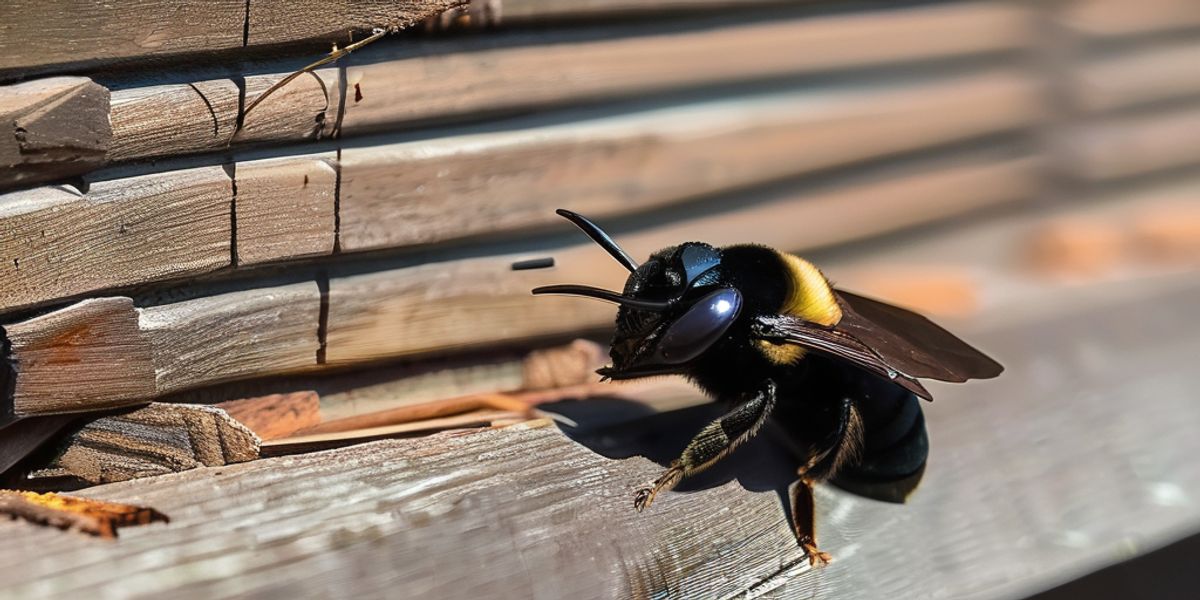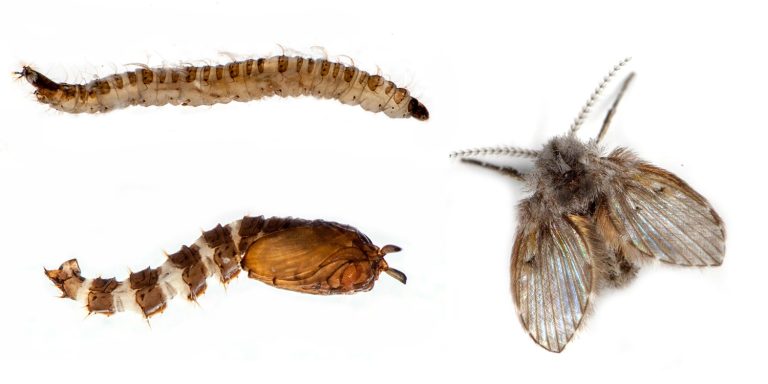Carpenter bees, often mistaken for bumblebees due to their similar appearance, are wood-boring insects notorious for causing damage to wooden structures. These solitary bees tunnel into untreated wood to create galleries for nesting, leaving behind unsightly holes and compromising the structural integrity of buildings, fences, and other wooden objects. While they play a role in pollination, their destructive habits can pose significant challenges for homeowners and property owners.
Signs to Watch For
The first step in eliminating carpenter bees is to identify signs of infestation. Look for perfectly round holes, typically about half an inch in diameter, bored into wooden surfaces, such as eaves, decks, fences, and siding. These entry holes serve as the entrances to carpenter bee galleries, where females lay their eggs and rear their young. Additionally, you may notice coarse sawdust or wood shavings accumulating beneath infested areas, indicating recent activity.
Preventing Further Damage
Once you’ve identified carpenter bee entry holes, it’s essential to seal them to prevent further damage and discourage future infestations. Fill the holes with wood putty or a suitable wood filler, ensuring a tight seal to prevent re-entry by adult bees or emerging larvae. For larger holes or extensive damage, consider replacing damaged wood with pressure-treated or naturally insect-resistant lumber to deter carpenter bees from nesting.
Targeting Hidden Nests
Insecticidal dusts, such as carbaryl or boric acid, can be effective in eliminating carpenter bees nesting within wood galleries. Using a bulb duster or similar applicator, inject the insecticidal dust directly into carpenter bee entry holes, ensuring thorough coverage of nesting areas. The dust will penetrate deep into the galleries, reaching adult bees and larvae, ultimately leading to their demise. Exercise caution when handling and applying insecticidal dusts, following safety precautions outlined on the product label.
Luring Intruders Away
Carpenter bee traps offer a non-toxic and environmentally friendly method for capturing and eliminating adult bees. These traps typically consist of wooden or plastic housing with entrance holes designed to mimic natural nesting sites. Bait the traps with sweet-smelling attractants, such as sugary liquids or commercial pheromone lures, to lure carpenter bees inside. Once trapped, dispose of captured bees and replace the bait as needed to maintain trap effectiveness.
Deterrence Without Harm
Several natural repellents can help deter carpenter bees from infesting wooden structures without causing harm to the environment or beneficial pollinators. Essential oils, such as citronella, peppermint, and tea tree oil, are known for their insect-repelling properties and can be diluted with water and sprayed onto wooden surfaces as a natural deterrent. Additionally, painting or staining wooden surfaces with insect-repelling finishes can help prevent carpenter bee infestations.
When DIY Isn’t Enough
In severe cases of carpenter bee infestation or for large-scale structural damage, it may be necessary to seek professional pest control services. Experienced pest control professionals can assess the extent of the infestation, implement targeted treatment strategies, and provide long-term solutions to prevent future infestations. While professional services may come at an additional cost, they offer peace of mind and assurance that the problem will be effectively addressed.
Winning the Battle Against Carpenter Bees
In conclusion, eliminating carpenter bees requires a multi-faceted approach that combines proactive prevention measures with targeted treatment strategies. By identifying signs of infestation, sealing entry holes, applying insecticidal dust, using traps and natural repellents, and seeking professional assistance when necessary, you can effectively combat carpenter bee infestations and protect your property from further damage. With persistence and diligence, you can win the battle against carpenter bees and preserve the integrity of your wooden structures for years to come.












+ There are no comments
Add yours